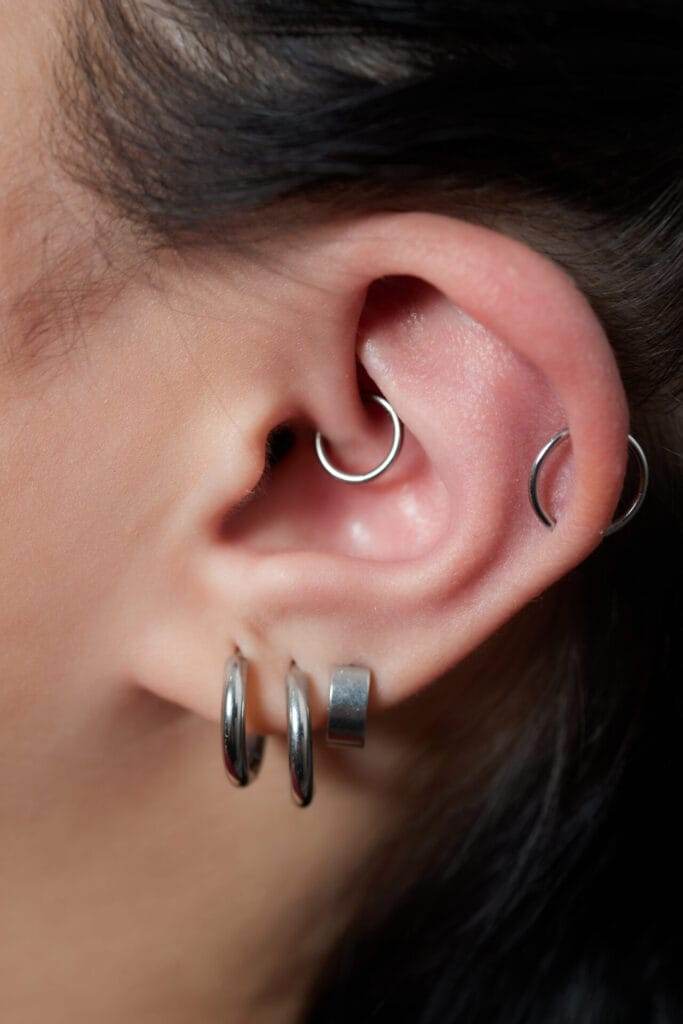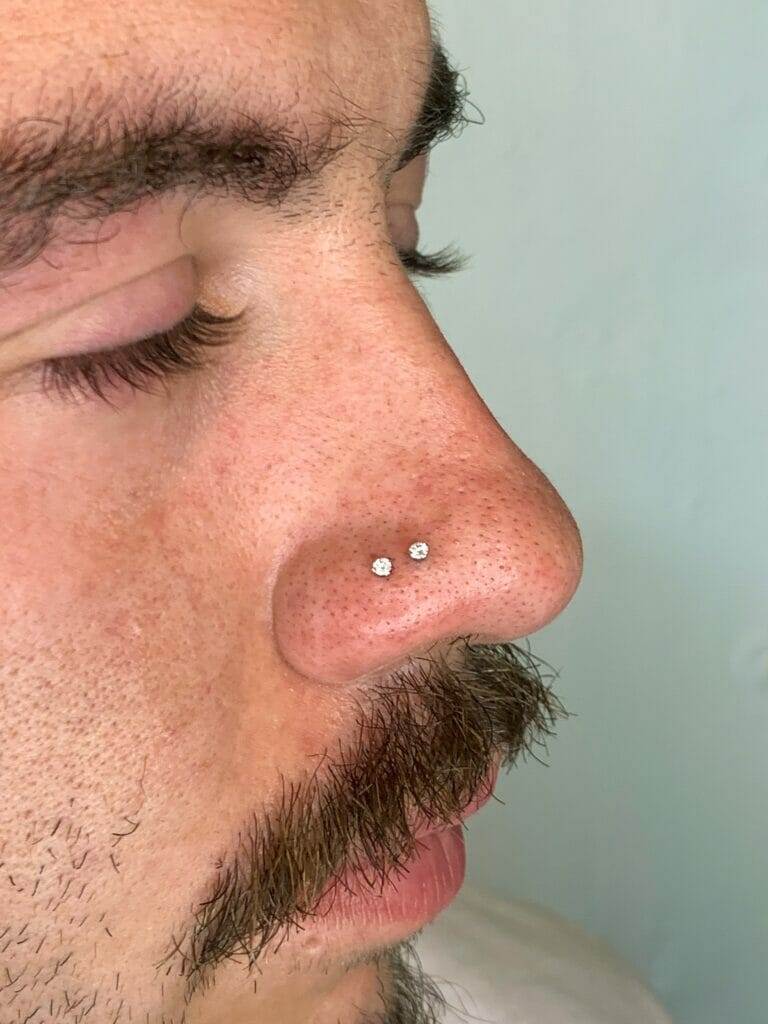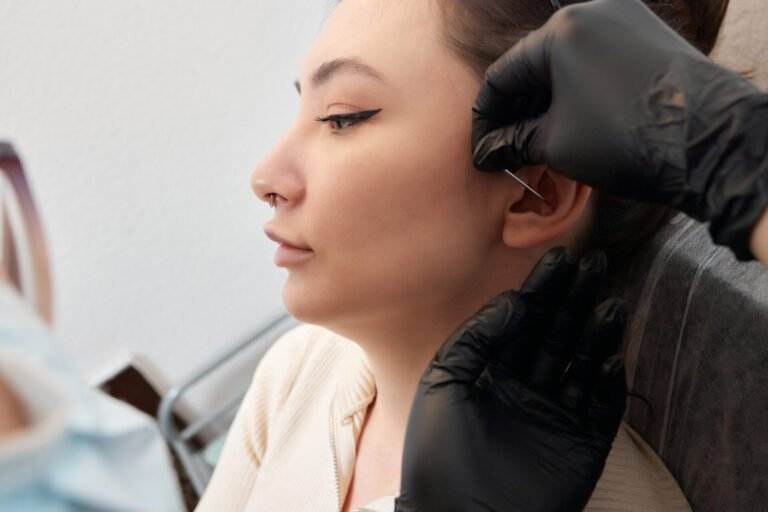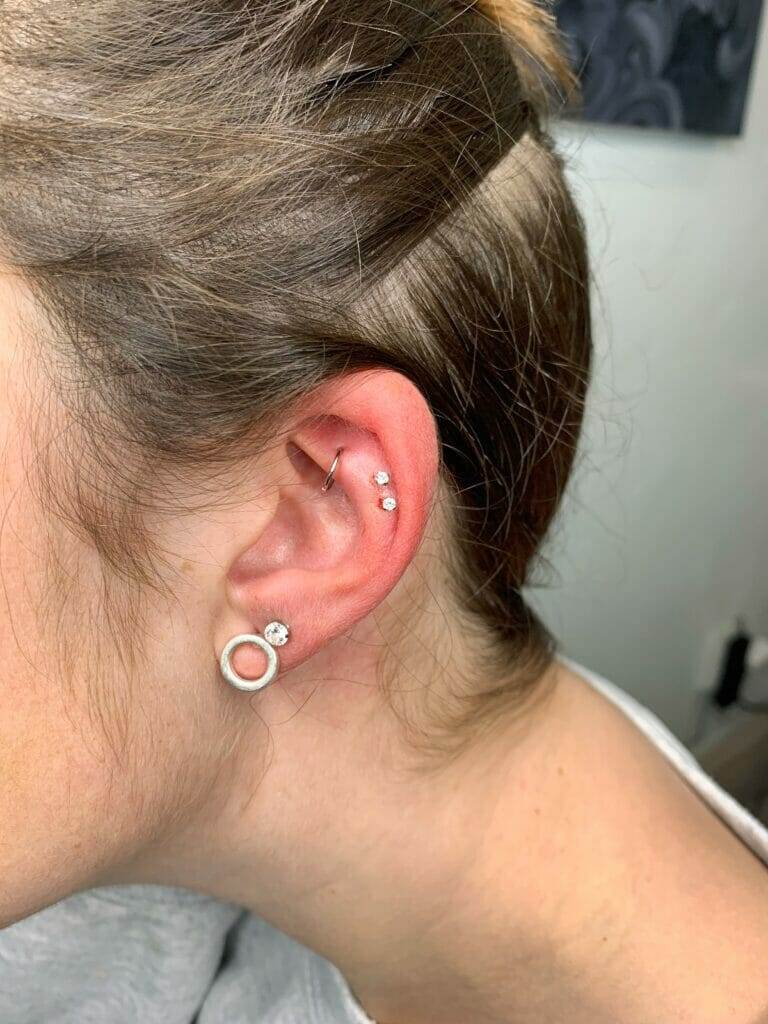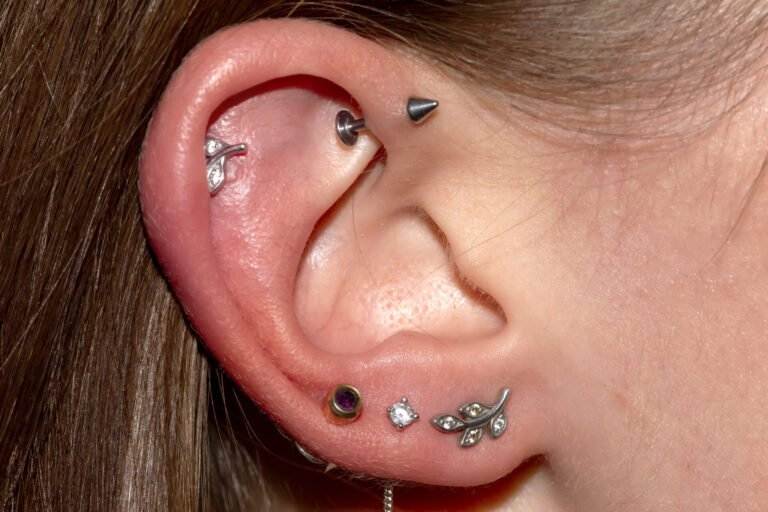Overview of body piercing and the importance of professional care
Body piercing is a popular form of self-expression and can be a way to enhance one’s appearance. It involves the insertion of jewelry or foreign objects into different parts of the body, such as the ears, nose, eyebrow, tongue, or belly button. While body piercing can be a fun and exciting form of self-expression, it is crucial to emphasize the importance of professional care and hygiene to ensure the safety and wellbeing of individuals.
One of the key reasons why professional care is essential when it comes to body piercing is to minimize the risk of infections. Skilled piercers follow strict hygiene procedures, such as using sterile equipment, washing hands thoroughly, and wearing gloves, to prevent the spread of bacteria and viruses. They also provide proper aftercare instructions to help individuals maintain good hygiene and avoid complications.
Moreover, professional piercers have extensive knowledge and experience in selecting the right type and size of jewelry, ensuring a proper fit and reducing the likelihood of irritation or discomfort. They can also advise on the appropriate healing time and provide guidance on how to clean and care for the pierced area during the healing process.
In contrast, unprofessional or DIY piercing attempts can lead to various risks and complications. These include infections, allergic reactions, excessive bleeding, scarring, nerve damage, and even the rejection or migration of the jewelry. Lack of proper equipment, knowledge, and experience increases the likelihood of these risks.
Overall, seeking professional care for body piercing is crucial to ensure a safe and positive experience. Professional piercers prioritize hygiene, have the necessary skills and knowledge, and can provide comprehensive aftercare advice. By choosing a reputable piercing studio, individuals can reduce the risk of complications and enjoy their new piercings with confidence.
Preparing for Your Piercing
The importance of cleanliness and sterilization
When preparing for a body piercing, it is crucial to prioritize cleanliness and sterilization. Professional piercers understand the importance of maintaining a clean environment to minimize the risk of infections and complications.
Reputable piercing studios follow strict cleanliness protocols, such as using sterile equipment, disinfecting surfaces, and ensuring proper hygiene practices. This helps prevent the spread of bacteria and viruses, keeping individuals safe during the piercing process.
How to properly care for your body before getting pierced
Prior to getting a body piercing, there are a few steps you can take to ensure proper care for your body:
- Choose a reputable piercing studio: Research and select a piercing studio with a good reputation for cleanliness and expertise.
- Cleanse the area: Before getting pierced, make sure to clean the area using a mild, antibacterial soap and warm water.
- Avoid alcohol and blood-thinning medications: To minimize bleeding during the procedure, it is advisable to avoid alcohol and blood-thinning medications for at least 24 hours before getting pierced.
- Stay hydrated and get a good night’s sleep: Keeping your body hydrated and rested can help promote faster healing after the piercing is done.
By following these simple steps and seeking professional care, you can ensure a safe and positive experience when getting a body piercing.

The Piercing Process
Step-by-step guide to what happens during a professional body piercing
When a client arrives at a professional piercing studio, the piercing process typically involves the following steps:
- Consultation: The piercer will have a discussion with the client about their desired piercing placement and provide them with information about the procedure, including potential risks and aftercare instructions.
- Preparing the area: The piercer will cleanse the area to be pierced using an antiseptic solution, ensuring that it is free from any dirt and bacteria.
- Marking the spot: The piercer will mark the exact spot where the jewelry will be placed, paying attention to precision and symmetry.
- Piercing: Using a sterile needle, the piercer will quickly and efficiently insert the jewelry into the marked spot. It’s important to note that this process may cause a brief sensation of discomfort or pain.
- Finishing touches: Once the jewelry is in place, the piercer will make any necessary adjustments to ensure it sits correctly. They will then provide the client with detailed aftercare instructions.
Understanding the use of sterile needles and jewelry
Professional piercers prioritize the use of sterile needles and jewelry to minimize the risk of infections and complications. Sterile needles are single-use and disposed of immediately after piercing, while sterile jewelry is carefully selected and cleaned before insertion.
By using sterile equipment, professional piercers take precautions to prevent the transmission of bloodborne pathogens and maintain a clean and safe environment for the piercing process.
It’s important to note that piercing guns are not recommended as they cannot be properly sterilized and the forceful impact they create can cause unnecessary trauma to the tissue.
Aftercare Instructions
Detailed aftercare instructions for proper healing
After the piercing process, it is crucial to follow proper aftercare instructions to ensure the piercing heals correctly and minimize the risk of complications. Here are some general aftercare guidelines:
- Keep the pierced area clean: Gently clean the area twice a day using a saline solution or a mild, fragrance-free soap.
- Avoid touching the piercing with dirty hands: Always wash your hands before handling the piercing to prevent the introduction of bacteria.
- Avoid rotating or twisting the jewelry: Allow the jewelry to sit naturally and avoid excessive movement, as this can irritate the piercing.
- Avoid submerging the piercing in bodies of water: During the healing process, it’s best to avoid swimming in pools, hot tubs, or natural bodies of water to minimize the risk of infection.
- Be mindful of clothing and accessories: Avoid wearing tight or irritating clothing or accessories that may snag or pull on the jewelry.
Common mistakes to avoid during the healing process
During the healing process, it’s essential to avoid certain activities that could hinder proper healing or increase the risk of complications. Here are some common mistakes to avoid:
- Using harsh cleansers or products on the piercing: Avoid using alcohol, hydrogen peroxide, or harsh antiseptics, as they can irritate the piercing and delay the healing process.
- Removing the jewelry too soon: The jewelry should not be removed during the initial healing period, as this can cause the piercing to close and lead to infection.
- Changing the jewelry too soon: Wait until the piercing is fully healed before changing the jewelry. Prematurely changing jewelry can disrupt the healing process and increase the risk of infection.
- Ignoring signs of infection or complications: If you experience increased redness, swelling, pus, or extreme pain, it’s important to seek professional advice to prevent further complications.
- Skipping routine aftercare: Consistency is key when it comes to aftercare. Following the recommended aftercare routine ensures proper healing and reduces the risk of infection.
Risks and Complications
Understanding potential risks and complications associated with body piercing

When considering getting a body piercing, it’s important to be aware of the potential risks and complications that can arise during the process. Some of these include:
- Infection: Piercings create an open wound, and if not properly cared for, can become infected. Signs of infection include redness, swelling, pus, and extreme pain.
- Allergic reactions: Some individuals may have allergies to certain metals used in jewelry, leading to irritation and discomfort.
- Bleeding: Minor bleeding is normal during the piercing process, but excessive bleeding should be monitored and addressed.
- Nerve damage: While rare, piercing can damage nerves, resulting in numbness or loss of sensation in the pierced area.
- Keloids: Some individuals have a predisposition to keloid formation, which are raised scars that can develop around the piercing site.
How professional care minimizes these risks
Professional piercers take several measures to minimize the risks and complications associated with body piercing. These include:
- Sterile equipment: Professionals use sterile needles and jewelry, reducing the risk of infections and complications.
- Proper technique: Professional piercers are trained to perform piercing procedures safely, minimizing the risk of nerve damage and other complications.
- Aftercare guidance: Professionals provide detailed aftercare instructions to clients, ensuring they understand how to properly care for the piercing and avoid potential risks.
- Continued support: Professional piercers are available for post-piercing support and guidance, allowing clients to seek advice if any complications arise.
By choosing a professional piercer and following their aftercare instructions, individuals can minimize the risks and complications associated with body piercing.
Final thoughts on maintaining your piercing’s health and longevity
Ensuring the health and longevity of your piercing requires proper care and attention. It’s crucial to clean the piercing regularly with a saline solution or piercing aftercare products recommended by your piercer. Avoid touching the piercing with dirty hands and refrain from changing the jewelry too soon, as this can disrupt the healing process. If you experience any signs of infection, such as increased redness, swelling, or discharge, seek professional medical advice promptly. Keep in mind that everyone’s healing process is different, and it may take several weeks or even months for your piercing to fully heal. With diligent care and adherence to aftercare instructions, you can maintain the health and longevity of your piercing.

